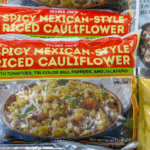In a world where we’re increasingly aware of what we put into our bodies, it’s easy to focus on ingredients and nutrients while overlooking a critical part of the health equation: food safety.
Foodborne illnesses, often called “food poisoning,” are a serious public health issue, causing an estimated 48 million illnesses, 128,000 hospitalizations, and 3,000 deaths each year in the United States alone.1 For communities already facing health disparities, these risks are amplified. We can’t see, smell, or taste the dangerous bacteria that can contaminate our food, so a proactive approach to safety is our best defense.
The good news? The majority of foodborne illnesses are entirely preventable.1 By adopting a few simple yet powerful habits, you can protect yourself and your family. Think of these five food safety tips as a roadmap for creating a safer kitchen and a healthier life.
1. Wash Hands and Surfaces Often
This is the golden rule of food safety. Germs are everywhere, and they can easily transfer from our hands and kitchen surfaces to our food. Before you start cooking, after handling raw ingredients, and before eating, wash your hands with soap and water for at least 20 seconds. This is a non-negotiable step.2
Beyond your hands, pay close attention to your kitchen environment. Use hot, soapy water to wash cutting boards, utensils, dishes, and countertops after preparing each food item, especially after they’ve come into contact with raw meat, poultry, or seafood. For extra protection, you can sanitize surfaces with a solution of one tablespoon of unscented, liquid chlorine bleach per gallon of water. Don’t forget to regularly wash kitchen cloths and sponges, which are often breeding grounds for bacteria.2
Unsafe food, beyond causing acute illness, can expose us to a variety of chemical contaminants and toxins that have been linked to long-term health issues, including cancer. These hidden hazards often arise from improper handling, storage, or cooking. By understanding these risks, we can add another layer of protection to our food safety routine.2
2. Don't Cross-Contaminate
Cross-contamination occurs when germs from raw foods spread to ready-to-eat foods. It’s a silent threat that can happen at every stage of the cooking process, from the grocery cart to your cutting board. To prevent this, always keep raw meat, poultry, seafood, and eggs separate from all other foods, especially fresh produce.2
At the grocery store, place these items in separate plastic bags. In your refrigerator, store raw meat on a plate or in a sealed container on the bottom shelf to prevent juices from dripping onto other foods. When preparing food, use separate cutting boards for raw and cooked items. A simple color-coding system (e.g., a red board for meat and a green one for vegetables) can be a great way to avoid mixing them up. Never place cooked food back on the same plate that held raw meat unless it has been thoroughly washed.2
3. Store your Food Properly
Improper food storage can allow mold to grow, particularly in staple crops like corn, peanuts, and other grains. Certain types of mold, specifically from the Aspergillus species, produce potent toxins called aflatoxins.3
These substances are known carcinogens, with long-term exposure significantly increasing the risk of liver cancer, a type of cancer that disproportionately impacts some communities of color. To prevent this, always store grains and nuts in cool, dry places and discard any food that shows signs of mold.3
4. Limit Processed Meats
Nitrites and nitrates are chemicals used to cure and preserve processed meats like bacon, hot dogs, and deli meats, preventing the growth of harmful bacteria like C. botulinum. However, when these meats are cooked at high temperatures, nitrites can combine with amino acids to form nitrosamines, which are potent carcinogens.4
The World Health Organization classifies processed meats as a Group 1 carcinogen, meaning there’s convincing evidence they cause cancer, specifically colorectal and stomach cancer. Limiting your intake of processed meats and opting for fresh alternatives is a simple way to reduce this risk.4
5. Cook Foods To the Right Temperature
Cooking food to the proper internal temperature is the only way to ensure that harmful bacteria are killed.2 While sight and touch might give you clues, a food thermometer is the only reliable way to know if your food is safe. Don’t just guess, measure.2
- Ground meats (beef, pork, veal, lamb): Cook to 160°F.
- Poultry (chicken, turkey, duck, and ground poultry): Cook to 165°F.
- Whole cuts of meat (beef, pork, lamb, veal steaks, chops, and roasts): Cook to 145°F and allow to rest for three minutes.
- Fish: Cook to 145°F, or until the flesh is opaque and flakes easily with a fork.
Remember to reheat leftovers to a safe internal temperature of 165°F as well, ensuring they are steaming hot throughout.
Knowledge is Power
Food safety is about more than just preventing a one-day illness; it’s a powerful tool for safeguarding our health against long-term threats. While we often think of diet and nutrition in terms of vitamins and calories, this conversation has revealed a more complex truth: the way we handle, store, and cook our food is just as critical to our well-being.
This knowledge empowers us to move beyond individual dietary choices and engage in a broader, more holistic form of health advocacy. It calls on us to be vigilant in our kitchens and to demand a food system that prioritizes safety and equity from farm to table. By taking control of our food safety practices, we are not just protecting ourselves, we are building a foundation of health and resilience for our families and our communities.
References
- USDA. (2025, February 07). Foodborne Illness and Disease. Retrieved from United States Department of Agriculture: https://www.fsis.usda.gov/food-safety/foodborne-illness-and-disease
- USDA. (2024, January 05). Keep Food Safe! Food Safety Basics. Retrieved from United States Department of Agriculture: https://www.fsis.usda.gov/food-safety/safe-food-handling-and-preparation/food-safety-basics/steps-keep-food-safe
- Magnussen, A., & Parsi, M. A. (2013). Aflatoxins, hepatocellular carcinoma and public health. World Journal of Gastroenterology. doi:10.3748/wjg.v19.i10.1508
- NIH. (2025, April). Nitrate. Retrieved from National Cancer Institute: https://progressreport.cancer.gov/prevention/chemical_exposures/nitrate







